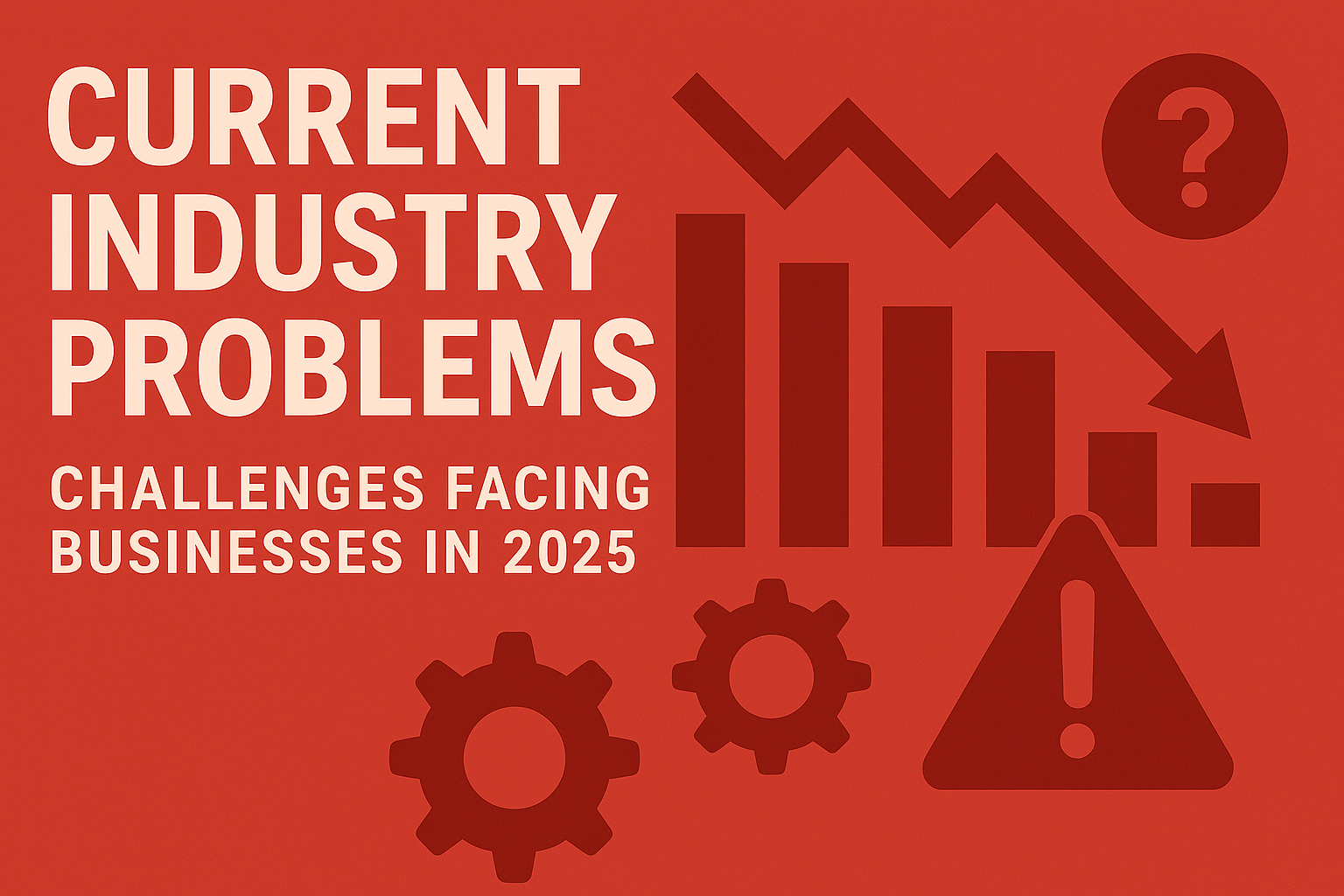The business landscape is evolving at an unprecedented pace, bringing both opportunities and challenges. While technological advancements, globalization, and innovation have transformed industries, they also introduce complexities that organizations must address to stay competitive. Here are some of the most pressing problems facing industries today and potential pathways to solutions.
1. Supply Chain Disruptions
The global supply chain remains fragile, impacted by factors like geopolitical tensions, natural disasters, and lingering effects of the COVID-19 pandemic. Industries reliant on just-in-time production have been particularly vulnerable.
- Impact: Delayed deliveries, increased costs, and shortages of critical components.
- Potential Solutions:
- Diversify suppliers to reduce dependency on specific regions.
- Invest in local manufacturing and nearshoring.
- Leverage AI for predictive analytics and supply chain optimization.
2. Labor Shortages and Skills Gaps
Many industries, from healthcare to technology, are struggling to fill roles due to a shortage of qualified talent. Rapid technological advancements outpace workforce training, leaving gaps in critical skills.
- Impact: Reduced productivity, slower innovation, and increased labor costs.
- Potential Solutions:
- Upskill and reskill employees through training programs.
- Partner with educational institutions to align curricula with industry needs.
- Embrace automation to mitigate labor shortages.
3. Rising Cybersecurity Threats
As businesses digitize operations and store more data online, they become prime targets for cybercriminals. Ransomware attacks, data breaches, and phishing schemes are on the rise.
- Impact: Financial losses, reputational damage, and legal repercussions.
- Potential Solutions:
- Implement robust cybersecurity protocols, including multi-factor authentication.
- Conduct regular security audits and employee training.
- Invest in AI-driven threat detection systems.
4. Economic Uncertainty
Global inflation, fluctuating currencies, and market volatility create financial instability for businesses. Unpredictable economic conditions make it challenging to plan for the future.
- Impact: Reduced consumer spending, tighter budgets, and delayed investments.
- Potential Solutions:
- Build financial resilience through diversified revenue streams.
- Adopt dynamic pricing strategies to adapt to market conditions.
- Monitor economic indicators to stay ahead of potential disruptions.
5. Sustainability Pressures
Environmental concerns and stricter regulations are pushing industries to adopt sustainable practices. However, transitioning to green solutions often involves significant upfront costs.
- Impact: Increased operational costs and pressure to meet ESG (Environmental, Social, and Governance) criteria.
- Potential Solutions:
- Invest in renewable energy and sustainable technologies.
- Collaborate with stakeholders to develop circular economies.
- Leverage government incentives for green initiatives.
6. Technological Integration Challenges
While technology drives innovation, integrating new systems with legacy infrastructure can be complex and costly. Businesses often struggle with choosing the right technologies and ensuring seamless adoption.
- Impact: Operational inefficiencies, increased costs, and employee resistance.
- Potential Solutions:
- Develop a clear digital transformation roadmap.
- Involve employees in the adoption process through training and feedback.
- Partner with technology providers for tailored solutions.
7. Geopolitical Instability
Trade wars, sanctions, and political conflicts disrupt international markets and business operations. Industries with global operations face uncertainty and increased risks.
- Impact: Supply chain disruptions, restricted market access, and higher operational risks.
- Potential Solutions:
- Conduct geopolitical risk assessments regularly.
- Diversify markets and suppliers to minimize exposure.
- Build strong relationships with local governments and partners.
8. Customer Expectations and Experience
Today’s consumers demand personalized, seamless, and fast experiences. Businesses failing to meet these expectations risk losing customers to more agile competitors.
- Impact: Reduced customer loyalty and revenue.
- Potential Solutions:
- Invest in customer relationship management (CRM) tools.
- Use data analytics to understand and predict customer needs.
- Continuously improve customer service through feedback and innovation.
9. Health and Safety Concerns
Post-pandemic, industries must ensure safe work environments while managing health risks. This includes balancing remote work and on-site operations.
- Impact: Employee dissatisfaction, reduced productivity, and legal liabilities.
- Potential Solutions:
- Implement flexible work policies and robust health protocols.
- Use technology to monitor and improve workplace safety.
- Foster a culture of well-being and support.
The challenges facing industries today are complex but not insurmountable. By embracing innovation, fostering adaptability, and investing in sustainable and secure practices, businesses can turn these problems into opportunities for growth and transformation. The key lies in proactive strategies, collaboration, and a commitment to continuous improvement.

